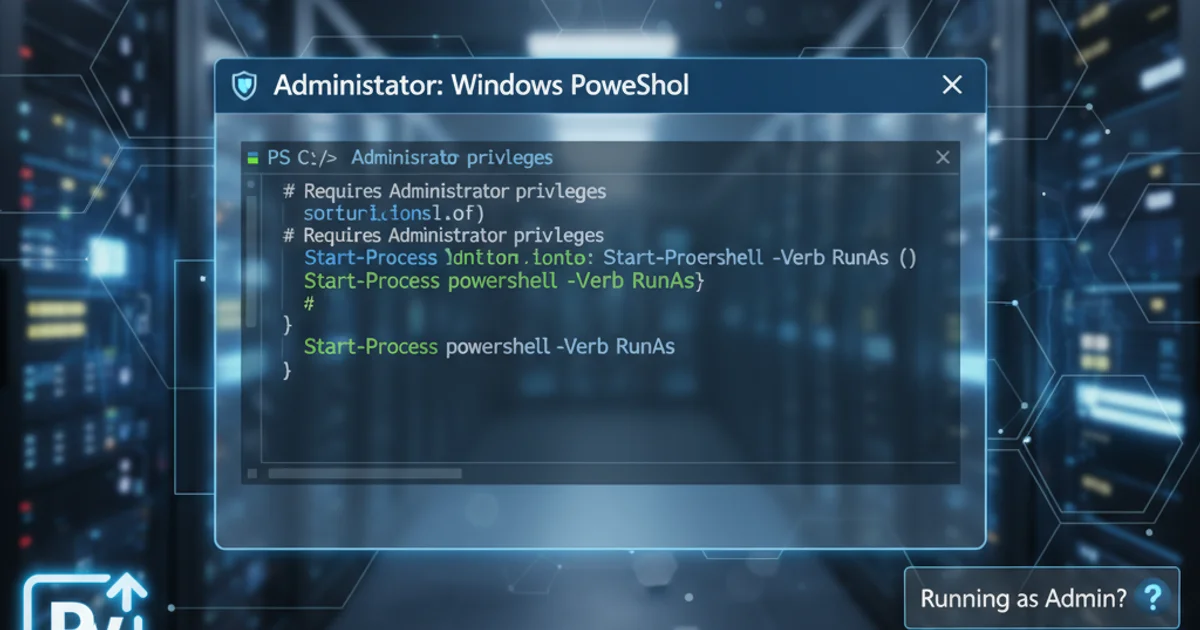Running a command as Administrator using PowerShell?
Categories:
Running PowerShell Commands as Administrator

Learn various methods to execute PowerShell scripts and commands with administrative privileges, essential for system-level tasks and configurations.
Many administrative tasks in Windows require elevated permissions. PowerShell, being a powerful automation tool, often needs to run with Administrator privileges to modify system settings, manage services, or access protected resources. This article explores different techniques to launch PowerShell as an Administrator, execute commands, and run scripts with the necessary elevation.
Understanding Administrator Privileges
When you run an application or command as an Administrator, it means the process is executed with elevated permissions, allowing it to make changes to the operating system that a standard user account cannot. This is crucial for tasks like installing software, modifying registry keys, managing user accounts, or configuring network settings. Without these privileges, many PowerShell cmdlets will fail with 'Access Denied' errors.
flowchart TD
A[User Initiates PowerShell] --> B{Is Elevation Required?}
B -->|No| C[Run as Standard User]
B -->|Yes| D[Prompt for Admin Credentials]
D --> E{Credentials Valid?}
E -->|No| F[Access Denied]
E -->|Yes| G[Run as Administrator]
G --> H[Execute Elevated Commands]Flowchart illustrating the process of elevated PowerShell execution
Methods to Run PowerShell as Administrator
There are several ways to launch PowerShell with administrative rights, depending on whether you're opening the console directly, running a script, or executing a command from another process.
1. Method 1: From the Start Menu
Search for 'PowerShell' in the Start Menu. Right-click on 'Windows PowerShell' (or 'PowerShell 7' if installed) and select 'Run as administrator'. Confirm the User Account Control (UAC) prompt if it appears.
2. Method 2: From File Explorer
Navigate to the PowerShell executable (typically C:\Windows\System32\WindowsPowerShell\v1.0\powershell.exe or C:\Program Files\PowerShell\7\pwsh.exe). Right-click the executable and choose 'Run as administrator'.
3. Method 3: Using Start-Process Cmdlet (for scripts)
To run a PowerShell script with elevation from within another PowerShell session (or a non-elevated one), you can use the Start-Process cmdlet with the -Verb RunAs parameter. This will open a new, elevated PowerShell window to execute the script.
Start-Process powershell.exe -Verb RunAs -ArgumentList '-File "C:\path\to\your\script.ps1"'
Running a PowerShell script with administrative privileges using Start-Process.
Executing Single Commands with Elevation
If you need to run just a single command with administrative privileges without opening a new interactive session, you can still leverage Start-Process.
Start-Process powershell.exe -Verb RunAs -ArgumentList '-Command "Set-Service -Name BITS -StartupType Automatic"'
Executing a single command with administrative privileges.
.ps1 script file and then execute the script using Start-Process -Verb RunAs.